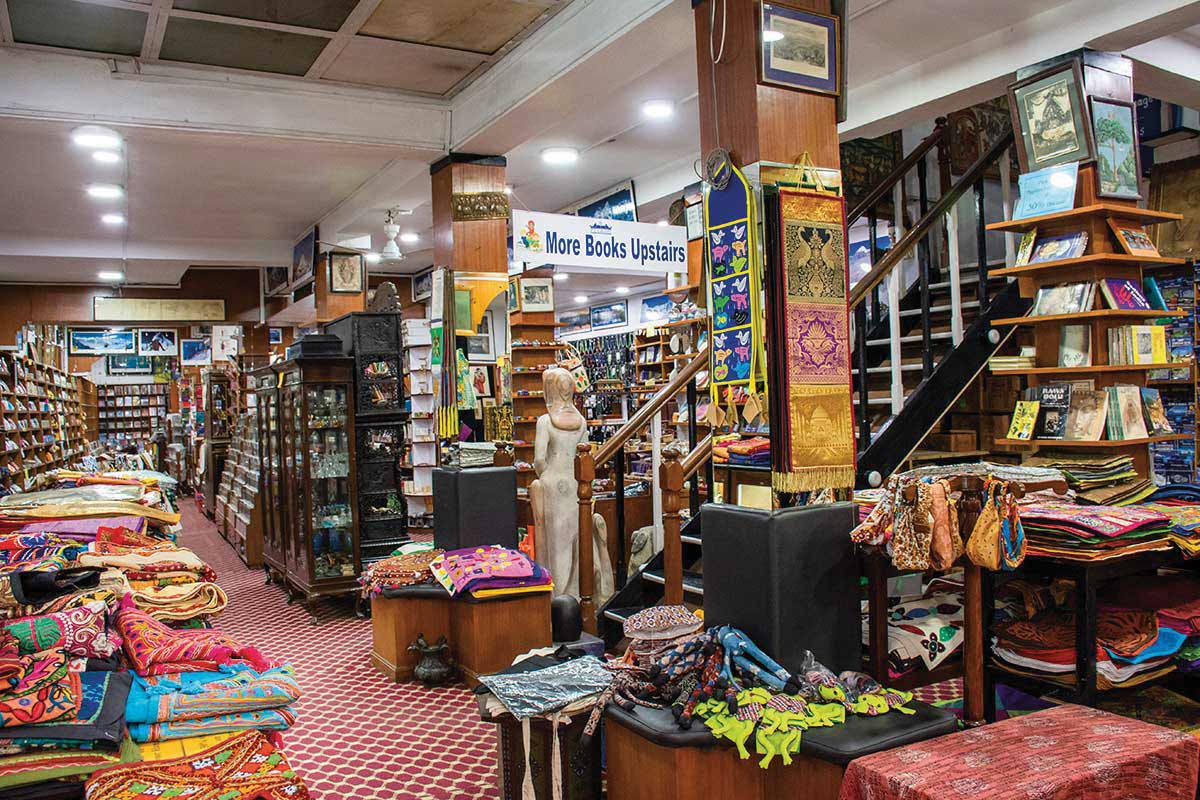Change is the only constant, and it holds as true for Thamel, the tourist hub of Kathmandu, as for anything else.
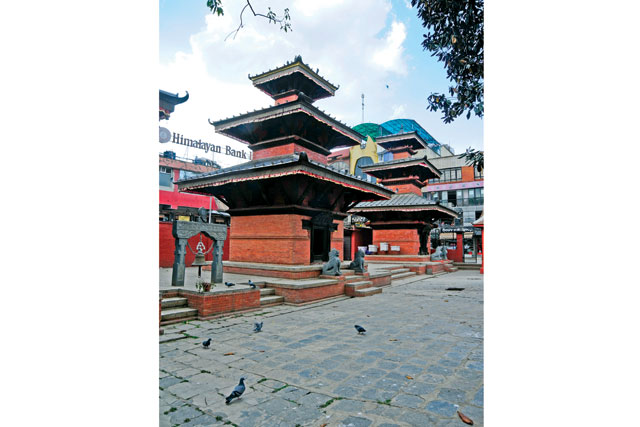
I once lived near Thamel many years before it became what it is today: the most popular destination for tourists visiting Nepal, a place most backpackers make a beeline for, the moment they land in Kathmandu. What is it about Thamel that attracts them so? Well, hundreds of hotels and lodges to suit most pockets, for one; hundreds of restaurants promising fare from all around the world, for another. And, alleys lined with shops selling everything from rare Himalayan and Buddhism books to wood, metal, and stone handicraft, ethnic and international wear to whatever one might need for an Everest expedition, rental mountain bikes to air-conditioned vehicles, esoteric therapy centers to wellness yoga classes, and so on and so forth.
It wasn’t always so, let me tell you, as someone who lived in a college hostel next to Thamel for a year or so in the early seventies. Then, Thamel was just one more part of the old Kathmandu, with nary a hotel or restaurant in sight, except for the odd bhojanalaya here and there that served all-you-can-eat meals of daal, bhaat, and tarkari, and the ubiquitous chiya (tea) shops that served traditional Newari dishes like malpua and jeri-swari. The alleys were usually quite silent, not many people from the city center (meaning New Road and thereabouts) found any reason for venturing to Thamel (so far!).

I found myself in Thamel once again in 1983. That was when I stayed for a day in a hotel there. This time around, the area had already started becoming a tourist hub, with quite a few hotels, lodges, restaurants, and shops in the area. I also noticed that there were some remnants of the 1970s tourism that wasstill being continued in Thamel. In the ’70s Kathmandu was a hippy paradise, with Jhochen (Freak Street) in Basantpur (next to Kathmandu Durbar Square) being the center of the universe for all those seeking peace, love, harmony, and hashish.
Gradually, for some reasons, the entire Freak Street scene dissipated, and the tourist scene shifted to Thamel, although it never had the opportunity to get as honorific a title as the once humble Jhochen of Basantpur. Hashish had been made illegal in the late 70s, and the folks who visited Nepal now consisted of fewer and fewer flower children, and more regular backpackers who came to discover a lost Shangri-la, where things were still pretty cheap. ‘Cheap destination’ was how Nepal was described, and sad to say, it was so popular a tag that we still haven’t been able to get rid of it, even though now we don’t lack in luxurious amenities that can make most high-spending tourists happy.
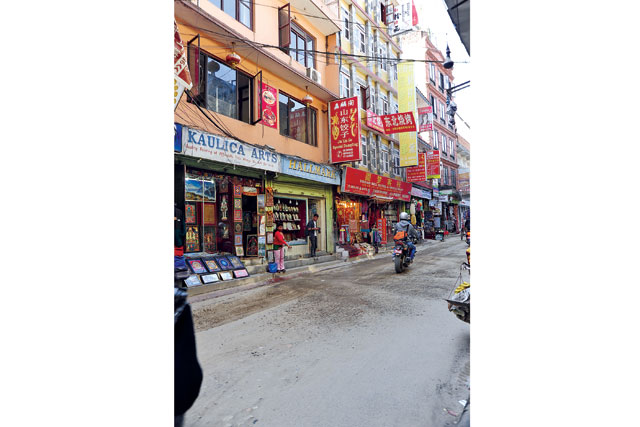
Anyway, Thamel, more than anywhere else in the capital, is touted for its ability to provide for any pocket, and that is another reason for making it the tourist hub. With time, it has become a meeting place for people from all over the world, with a good number of convivial watering holes and welcoming restaurants providing great rendezvous points. However, as they say, the only constant in this world, if not the universe (I mean, the sun has been there for ages!) is change, and that’s what’s happening to Thamel. That, too, in a pretty rapid manner.
Today, make a visit to Thamel (actually, to any other place in Kathmandu with a heritage aspect), and you will come out with a thought to ponder upon—are ancient structures treasures to be preserved, or are they derelicts of the past that are destined to be overwhelmed by the determined march of modernization? That’s what I was forced to think after a recent three-hour visit around Thamel. The changes to the area (which is, in fact, quite a small area) are dramatic, or at least they promise to be, when the many new high rise buildings and modern complexes that are in various stages of completion, are completed. The current landmarks—which mostly cater to tourists on a budget, and I suspect, to the romantic nostalgia of some looking for a semblance of the Freak Street of yesteryears—that have defined Thamel, may soon be lesser entities, what with the imminent arrival of posh high-end five-star hotels and restaurants with classy dining ambience.
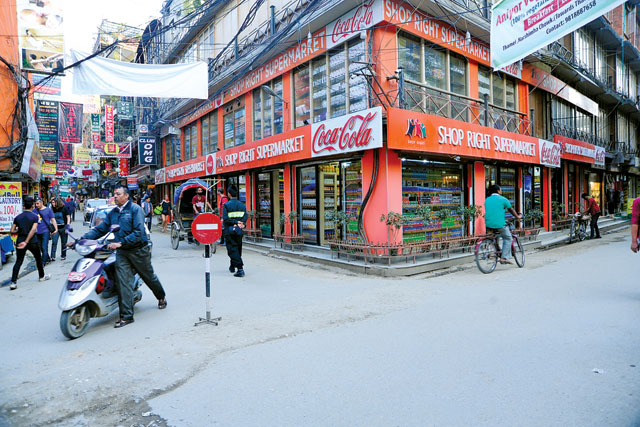
All these new activities naturally have led to many changes already. For instance, there seems to be fewer bookshops than before in the area now. When talking about bookshops, keep in mind that I’m talking about something very dear to many tourists’ hearts. And, none more so than Pilgrim’s, a landmark, one must say. Sadly, the main outlet near Kathmandu Guest House (a heritage, for sure) burned down in 2013, with the flames devouring thousands of books, including many rare books related to the Himalaya. The large shop was not only said to be one of the biggest in Asia, but also had the largest collection of books on Himalayan subjects in the entire region.
Fortunately, they have another outlet close by, also in Thamel, where book-lovers can still have a feast for the senses and browse to their heart’s content. Just as they also can at other great bookstores like Vajra Books, a real treasure house of the printed word, and Tibet Book Store that expectedly specializes in publications related to Tibet and Tibetan Buddhismand its numerous esoteric aspects. Similarly, Walden’s, Summit, Vision, Book Depot, etc. have been delighting booklovers for a long time with their bounties. As one would expect of a tourist center, many bookshops have second hand book sections, with the buyer assured of fifty percent return when they return the purchased book(s). A win-win arrangement for everybody, no doubt.
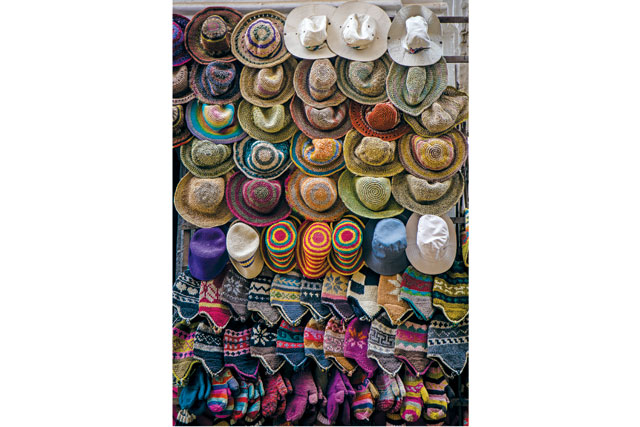
Now, coming to Kathmandu Guest House, it is, one could say, where it all began—meaning, the rise of Thamel as the definitive tourist center of Kathmandu, and of all Nepal. Back in 1968, when Freak Street still ruled the roost as the place to park your sleeping bag in, a forester named Mr. Karna Sakya and his brother decided to convert an old Rana palace in Thamel that their father had bought in 1955 from a man called Kumar Narsingh Rana (who was, as a matter of interest, the first recognized architect of the country) into a hotel, of sorts.
Mr. Sakya had ideas that transcended the ordinary, and he worked at creating an eco-friendly sanctuary where weary travelers (especially trekkers) could put up their feet amidst natural surroundings and feel at one with nature. At the same time, realizing that business could grow only when the locality itself developed into a tourist center, he began inviting some of the established businesses of Jhochen to set up shop in Thamel. In time, with a fair bit of luck and a good measure of consistent effort, the area around the guest house began to witness the opening of many tourist-related establishments.
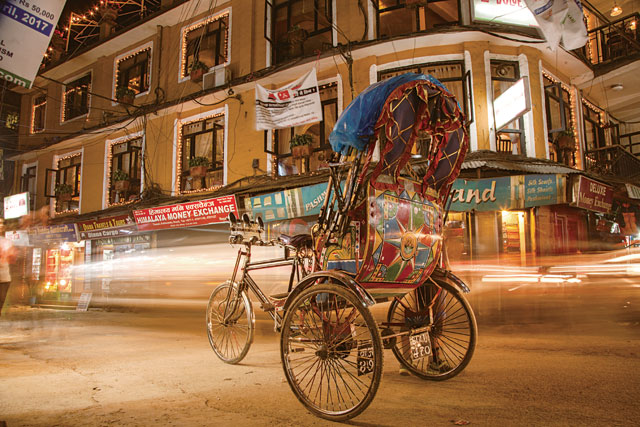
Soon enough, tourists were eagerly making their way to Thamel, straight from landing at the airport, and the locality began to be talked about all over the world as the tourist hub of Nepal. Kathmandu Guest House, its place firmly entrenched in the area’s history, has been the home away from home for many famous men and women around the globe, including renowned mountaineers, Hollywood stars, authors, and even royalty.Apparently, Thamel has been an inspiring muse to many writers, too, what with over seventy percent of books written on Nepal having been penned right here. That’s an interesting revelation from Mr. KarnaSakya, one man who should know.
When talking inspiration, one mustof course mention the Garden of Dreams, a neo-classical historical garden located in the area. It took seven years (2000-2007) for it be recreated—recreated, because it was originally famous as the Garden of Six Seasons. Built by Field Marshal Kaiser SumsherRana (1892-1964), the fabled garden had it all—six neo-classically designed pavilions dedicated to the six seasons of the country, cascading fountains, ornamental garden furniture, and pergolas, verandas, balustrades, birdhouses,urns, et al, all designed in period European style.However, down the decades, the garden had fallen into ruin.
Eventually, only half the original area remained. Now, this 6,895 sq. m garden, the Garden of Dreams—after careful restoration and recreation—has three pavilions,a central pond, a Grecian amphitheater, pergolas, urns, etc.set on manicured lawns and lots of greenery. In the making of this garden, too, Mr. Sakya had an important role to play, when as the national coordinator of Nepal Tourism Year 1998, he first put forward the idea of recreating the once fabled Garden of Six Seasons. The Austrian government stepped in, along with architect GotzHagemuller of Patan Museum fame, and so was created the Garden of Dreams, a worthy addition to Thamel’s prestige and charm. The Kaiser Café Restaurant and Bar inside the garden, run by the renowned Dwarika’s Hotel Group, provides delicious fare in a picturesque environment.
Aside from this, the numerous lovely hotels in the locality are a boon for travelers looking for a comfortable stay during their time in Kathmandu. Many of them have their own unique characteristics, and most are well-facilitated to meet the modern needs of today’s travelers. Free wi-fi is almost a given. As is delicious cuisine and fine spirits. Some boast of serene outdoor lounging areas amidst well-tended gardens, promising an oasis away from the nearby hustle and bustle. There are so many hotels and lodges and guest houses that you are sure to find one to suit both your budget and your particular needs. Amidst this sea of plenty, there are some that are so well-known as to be synonymous with Thamel, such as the towering Marsyangdi, Manang, Mandap, and Vaishali.


